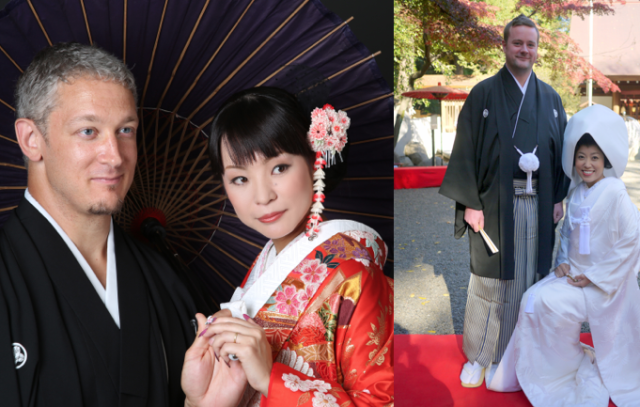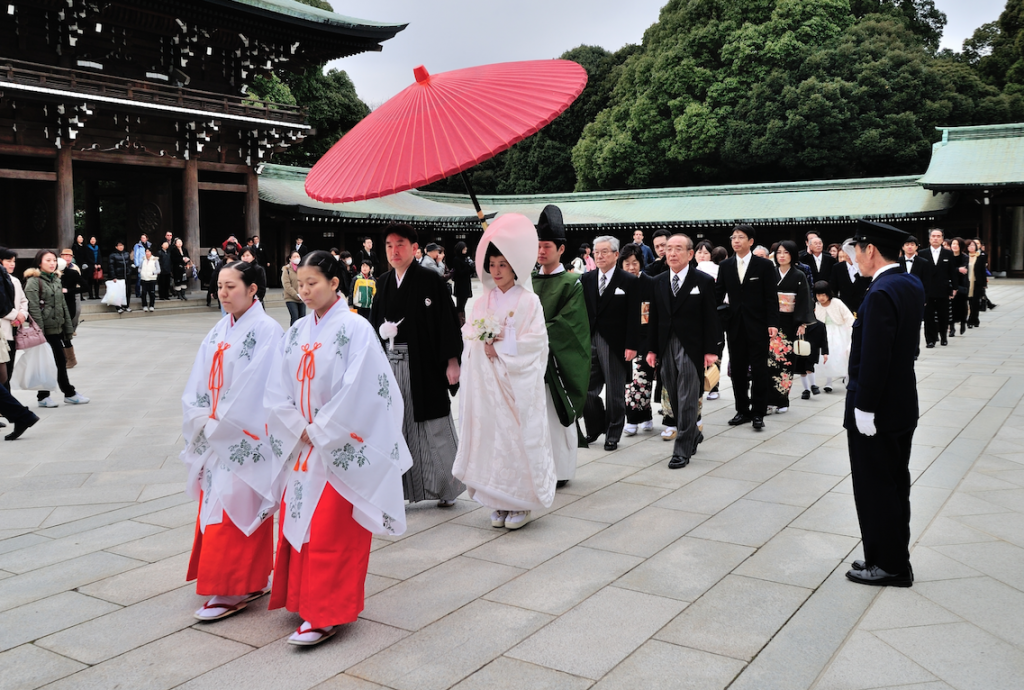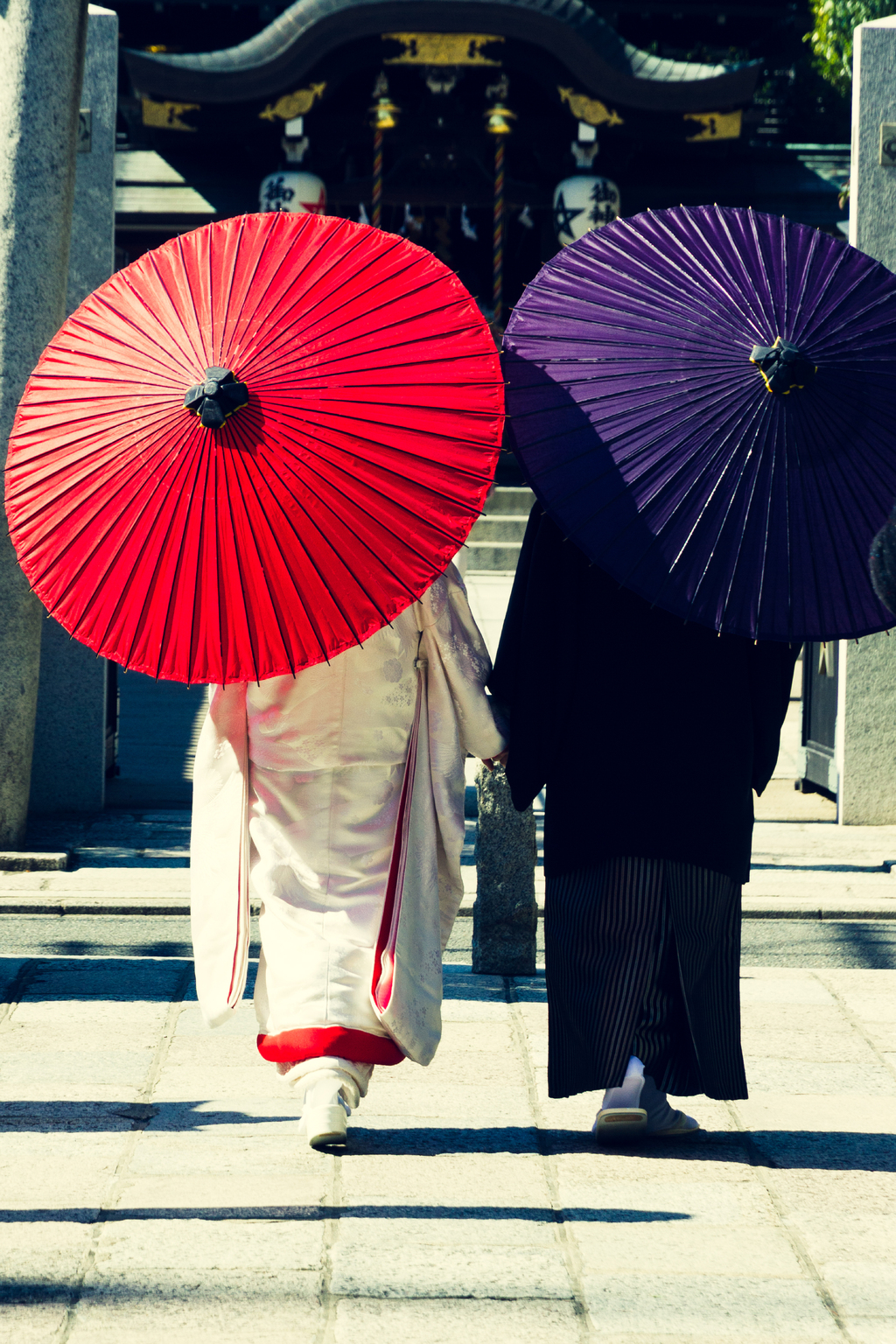Then you’re most likely feeling overwhelmed. Since June is wedding season, we thought it a fitting month to answer all those frequently asked questions about planning your big day in Japan.
Where to Start?
First things first: if either you or your partner is a foreign, non-citizen of Japan, then, by Japanese law, that individual (or both of you!) needs to receive “permission” from your local embassy or consulate before you can proceed. Normally, this process is painless and will involve obtaining a notarized affidavit stating you can legally be married. Once you’ve obtained the document, march your way to your local city ward office with two witnesses. Fill out the konin todoke form (literally, a “change family registration” request), and get the seal of approval just a few moments later, thus marrying you! It’s sans all of the glitz and glam, but the office is accommodating: many marriage offices will be open on the weekend, or until almost midnight. The marriage license is in Japanese and can only be officially translated and notarized by your consulate.
There, the hard work is all done! Now, it’s time for the ceremony and wedding party planning. Many couples, especially if both are working and lead busy Tokyoite lives, hire a wedding planner to sort out all of the details and bring samples to choose from. Although pricier than a DIY-style wedding, Japanese wedding planning companies are proficient, making sure each second of your day is accounted for. Most planners will be happy to assist couples in a modern-style wedding, or arrange a more traditional ceremony. Also, many venues, planners, and florists are connected to each other, making the planning a whole lot easier (if a tad more expensive).
The Main Differences from a Western Wedding?
Mainly, the hike in prices. Many couples in Japan comfortably pay around three or five million yen for their wedding. But the guests are all “expected” to pay a tidy sum (you’ll see odd numbers, like ¥30,000, ¥50,000, or ¥90,000, as even numbers are too easily divided and thus bad luck for a new couple) as their gift. No registries here! At least you’ll get a nice return for all of the expenses.
Unless you want to replicate a Western wedding at a chapel (or cathedral at St. Mary’s in Chiyoda), there won’t be any vows or “I dos.” One sixth of all weddings today in Japan still follow traditional Shinto or Buddhist customs. They are considerably smaller than Western weddings as couples only invite immediate family and a best friend to witness the ceremony. During the ritual, all parties will kneel in the main hall of the temple, and a priest will give their version of a sermon. Then, the bride and groom take three sips of sake to receive blessings from the kami (gods), and leave symbolic offerings for them. Afterwards, there is a short procession around the temple grounds.
The ceremony is commonly followed by tea, a few photos, and freedom to walk the temple gardens. After this, the couple is escorted to the reception, normally held at their favorite restaurant or garden café, and with around 200 guests (mainly co-workers) present. This part usually includes speeches, cake cutting, and an (always lengthy) slideshow.
What to Wear?
You’ve likely seen them – the huge, pink, fluffy, Quinceanera-looking ball gowns and Cinderella-esque pink frills. Yes, these are “new age” wedding dresses that Japanese women clamor to get their hands on. Arguably, it may be a route for you, as not only will you feel like a Disney princess, but they will be markedly cheaper to rent than a traditional kimono. On the flipside, red kimonos are considered all the rage this year. Traditional white kimonos are layered heavily, and require almost two hours to put on (“I felt like fainting!” claims one bride). Menswear is easier to deal with: suit rentals or formal kimonos are darker, plainer, and easier to find.
Be careful of package deals with temples or hotels – they often have their own rental service, and charge a fee of up to ¥50,000 if you want to choose your own rental studio. Dresses to rent range from ¥10,000 to ¥100,000 for a brand name, and traditional kimonos typically start at around ¥90,000, and we won’t even bother telling you the price of the all-gold ones available to rent.

Weekender Weddings: Our editor Alec Jordan (left) and art director with their lovely brides, Kayo (left) and Rina
Where to Hold Your Wedding?
Most Japanese couples, keen on abandoning the temple or shrine weddings of the past, are booking wedding parties at restaurants, hotels, and chapels. Many Tokyo locations like these are well-equipped with sound systems, catering, photographers, and decorations. Again, keep in mind the packages’ rules, including, for example, an additional cost if you want to bring in a friend to take photos. Temples are difficult to book directly and most will require a wedding planner. However, temples in Kyoto often see foreigners marrying onsite, so this is a good place to start: tinyurl.com/TWkyoto-temples. Shunkoin Temple in Kyoto will perform an entirely traditional Japanese wedding in English (www.shunkoin.com).
Boutique-centric areas, such as Harajuku and Omotesando, have several European-themed or “tea house”-type venues to rent, along with references to foreign ministers and officiates (try Jardin de Luseine in Harajuku: www.luseine.com). Alternatively, if you want to get into the Japanese kawaii spirit, for a cool ¥7 million the creative minds at Tokyo Disneyland/Sea will plan your wedding, and lend you the gown, the Cinderella dining hall, and the Cinderella Castle for the ceremony (www.disneyweddings.jp).
How to Save Money?
Skip all of the fanfare we listed above, get your paperwork squared away, pick up a pair of summer yukata, invite friends for a potluck, then hit the beaches or parks and keep a party going well past sunset.
Useful Contacts
Wedding Wear Rental
1. Kimono wedding rentals, including make-up, styling, and photoshoot: kr-aki.co.jp/english/rental_plan.html
2. Comparable studio for services, markedly more high-end, and includes a team: ark-rent.co.jp/english
3. Western-style wedding wear: www.anniebridal.com
Wedding Planners for Foreigners
1. Help with booking a local temple or shrine: suncolle.co.jp
2. Options for gardens, hotels, temples; both traditional and modernized ceremonies available: www.princehotels.co.jp/parktower/wedding
3. From flowers to photos, they cover everything: serendipity-flower.com
Marriage Form Download
1. The US Embassy site provides a run-down of the steps, and an affidavit: https://jp.usembassy.gov/u-s-citizen-services/child-family-matters/marriage/
2. This is a Japanese-only site, but it provides steps for filling out the konin todoke (婚姻届) form at city hall, and includes sample forms: konin-todoke.com
This article appears in the June 2016 issue of Tokyo Weekender magazine.










